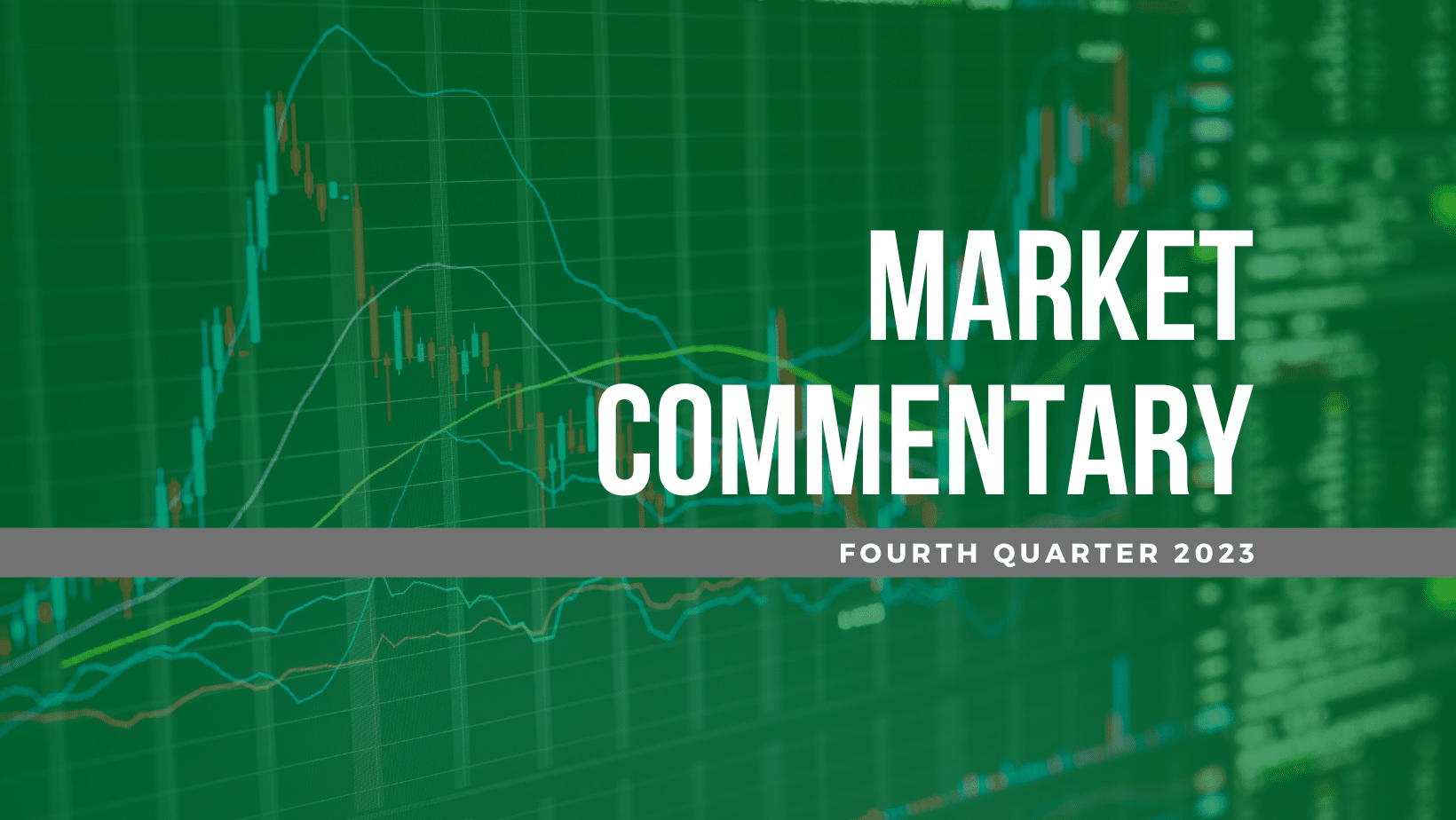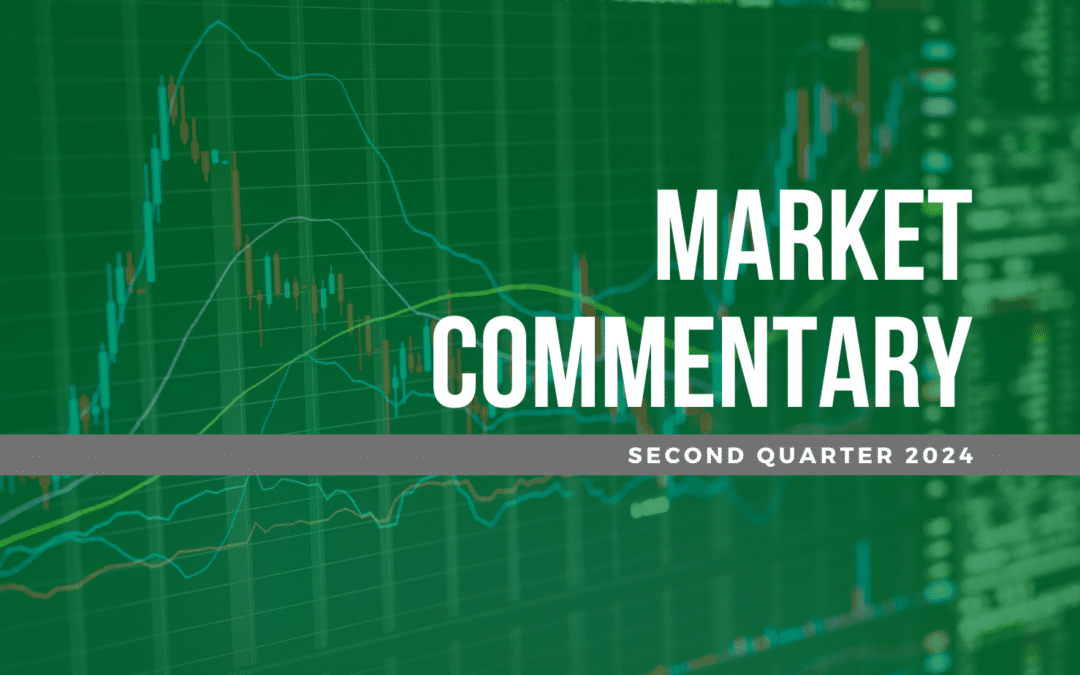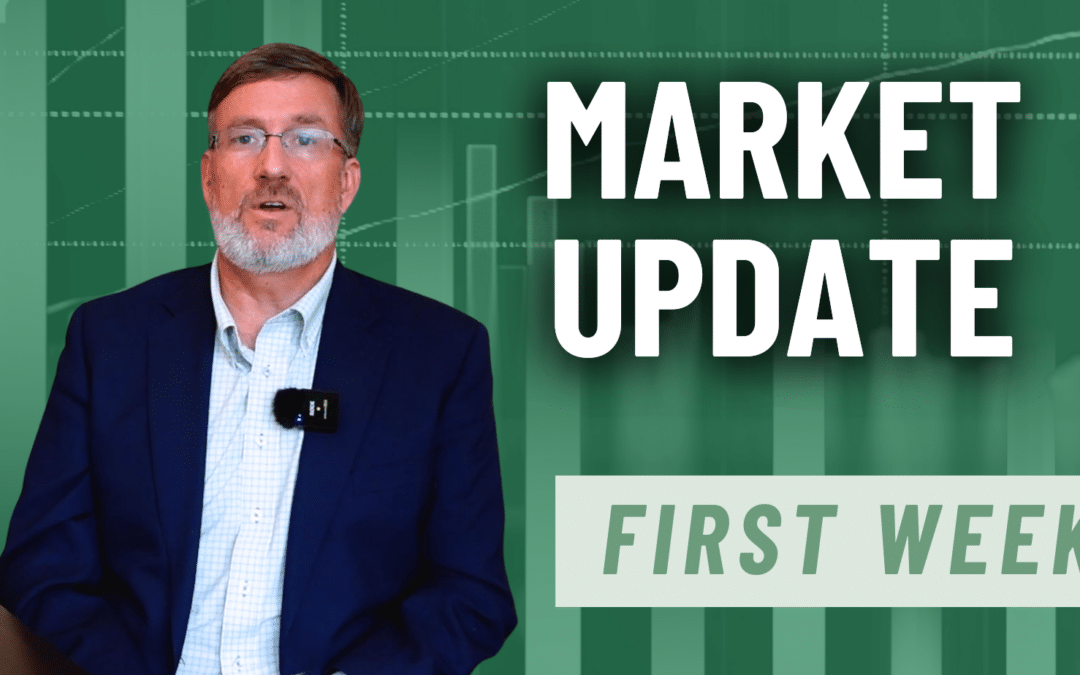Economic Overview
By Dr. Mark Pyles
There have been many instances over the last couple of years where general opinion on the state of the economy could have been summed up with the phrase “impending doom.” While the second part (“doom”) gets most of the attention in the statement, a strong argument could be made that the “impending” portion brings about the most significant risk. The actual negative event (even one as significant as “doom”) is usually not as bad as the wait for it to arrive. Indeed, this appeared to be the sentiment that dominated large periods of time in the latter stages and aftermath of the COVID pandemic. To be fair, the word “doom” can be more accurately replaced with the less dire and more appropriate “recession,” which has led to many claiming the recent past has created the opportunity for the most predicted recession in history.
Following the unprecedented exogenous shock to the global economic system and the resulting supply chain and fiscal stimulus impacts, seemingly every rule book based upon historical precedent argued that there would necessarily be an economic price to pay. After all, few felt that $3T of capital could be injected into the financial system, relatedly have consumer prices (as measured by headline CPI) peak at an increase of 9.1% YoY in June 2022, and in response have massive amounts of global monetary policy tightening – and come out of it with only a few bad months in 2020?
This outcome seemed unlikely. Thus the “impending” recession notion built a great deal of steam in 2022. It is well-known that financial markets tend to be leading, and in 2022 we experienced a historically bad year with both equity and debt markets selling off considerably. The Federal Reserve, realizing that pricing pressures were very elevated, started a hiking campaign to rival any in history in terms of speed and magnitude. As they “lifted off” from 0% in March 2022 and rapidly advanced rates over the remainder of the year, these actions cemented in most economists’ minds that a recession was all but a foregone conclusion. The Fed itself spoke of the likely necessity for a period of “below-trend economic growth” in order to return the U.S. economy to price stability.
As a result, we have spent the entirety of 2023 getting spooked by every creak of the economic floorboards and every whisper in the economic winds.
And yet, the doom (i.e., recession) has not yet arrived.
Traditionally reliable indicators of a recession (such as a yield curve that first inverted in March of 2022 and Conference Board US Leading Economic Indicators (LEIs) that first turned negative in July 2022) nodded their collective heads in agreement.
As a result, we have spent the entirety of 2023 getting spooked by every creak of the economic floorboards and every whisper in the economic winds. And yet, the doom (i.e., recession) has not yet arrived. In fact, we have produced GDP prints of 2.2%, 2.1%, and 4.9%, respectively, for the first three quarters of the current year, building upon 2.7% and 2.6% for the last two quarters of 2022. The Atlanta Fed’s GDP Nowcast currently stands at a prediction of 2.3% for the final quarter of 2023. Personal consumption, the lifeblood of economic growth, has provided the bulk of this, averaging just over 2% for the last five quarters.
Where is the Recession?
A large part of the reasoning behind so many predictions of doom being wrong lies in the stability and resilience of the labor market. From an economic standpoint, as long as consumers have job security and are earning strong wages, we will generally continue to spend. While off the fever pitch of the post-COVID recovery, the labor market still boasts a historically very low unemployment rate of 3.7% with 8.7M job openings and a four-week rolling jobless claims value of 212k. By way of comparison, from 2015 – 2019, these values stood at 4.4%, 6.4M, and 245k. Earlier in 2023, the “strong wage” part was very much in debate, with real hourly earnings negative for 25 straight months, from April 2021 through April 2023. However, we have now seen seven straight months of positive results as wage growth has held while inflation has declined significantly.
Speaking of inflation, those raging hot levels of mid-2022 have now rolled considerably to where the December 2023 print was only 3.1% YoY for headline CPI, 4.0% YoY for core CPI, and 2.6% YoY for core PCE (the Fed’s preferred gauge). While these numbers are still meaningfully above the Fed’s clearly articulated target level of 2.0%, there is considerable reason to believe continued decreases are to come, as measurements of shelter costs (notoriously lagged and difficult to calculate) are likely to decline in coming months. The Federal Reserve has taken notice of this and in the December meeting of the FOMC maintained the current fed funds rate of 5.25% – 5.50%. More importantly, the Summary of Economic Projections (SEP) is now pricing in three rate cuts for next year, a sharp contrast to the previous iteration from September that still argued for a further rate increase.
Is the Landing Gear Down?
Market participants currently feel more strongly about rate cuts for 2024 than does the Fed, and are currently pricing in six, with a year ending rate of sub 3.8%. This predicted alleviation of financial tightening, within an economy that is being perceived as having weathered the storm, has resulted in significant market optimism. Put simply, recession no longer feels inevitable to most. In fact, “doom” has given way to the debate over “landings” and the consideration of hard versus soft versions thereof. More so, progressively throughout Q4 the market increasingly appears to believe that we can avoid landing at all – and instead gently drift into a lower glide pattern before the next updraft takes us along to the new cycle.
While all of this is very pleasant to consider and a relief from the prevailing opinions a year ago, our current thinking remains a bit more guarded. We feel there are still risks within the economy and that the predictive pendulum has swung a bit too hard and far. Over 500BP of interest rate hikes has served, at least in part, to curb inflation. However, it should have also applied massive braking power to the US economy. While we have seen some isolated and relative mild evidence of this, the question remains of whether we have dodged the worst of economic slowdown fears … or whether they are simply slower in coming than most would have imagined?
There are continued anecdotal concerns about the “cautious consumer” from consumer sensitive firms in their earnings calls. Savings rates as a percentage of disposable income remain historically low (4.1%), while consumer credit continues to increase rapidly. It is likely that the majority of any remaining excess savings build up during the pandemic is in the hands of the wealthier portions of the population, leaving the lower-income households more susceptible to pricing pressures and any weakening of the labor market. We still have wars in Ukraine and the Gaza strip that could threaten energy supply chains. And the yield curve is still inverted (consistently since July 2022), and leading economic indicators are still negative (for 17 straight months). Both of those would be a record without a recession.
Last quarter, we wrote in these pages of an “optimist” and a “pessimist” viewpoint of the economic outlook. One quarter later, it is clear that the optimists are driving financial markets, and it is easy to understand why. Even the pessimists seem to be cautiously emerging from their safety bunkers blinking into the economic sunshine.
Internally, we are more hopeful of the superior economic outcome – an avoided recession coming out of one of the most unique and challenging periods in history – than we have been at any point in the last several quarters. The data convicts us to be so. But we also feel there are too many guards being let fully down and caution ourselves on getting too far ahead of reality.
The Stock Market
By Walter Todd
As we close the books on the final quarter of 2023, it is helpful to reflect a bit longer-term on what has brought us to this point. In February 2020, the world was onset by one of the most dramatic and widespread exogenous shocks in history. While the ripples through the global economic system were significant and prolonged, US equity markets rebounded quickly – and by August 2020, the S&P 500 (SPX) had surpassed pre-COVID levels and accelerated throughout the following year. And that brought us to the beginning of a two-year equity market (2022 & 2023) period that, in very different ways, provided extreme navigational challenges. The Fed launched into one of the most aggressive interest rate tightening campaigns in history in March 2022, which paved the way for an historically bad year for both equity and debt markets. The SPX specifically sold off over 18% (in total return) during the year, with all but two of the eleven sectors losing ground during the calendar year.
Moving forward, on paper 2023 is going to go down as a very good, if not great, headline U.S. equity market year, with the SPX gaining over 26% in total return. However, that number is not an accurate representation of the challenges of navigating the market over the year for two important reasons. First, the performance has been very narrowly led. Three sectors (Information Technology, Communication Services, and Consumer Discretionary) have been the clear winners of the year, averaging a total return of 52%. Digging deeper, over 70% of the names in the S&P 500 underperformed the index, a historically large number. And, deeper still, we have written in these pages all year of the “Magnificent 7” (Alphabet, Amazon, Apple, Meta, Microsoft, Nvidia, and Tesla), which as recently as October could be attributed essentially to the entirety of the S&P 500 advance to that point. Those seven names averaged over 100% return for the year, or about 4x that of the overall index. As such, the story of 2023 can be largely categorized as the year of the “3 and 7” (i.e., three sectors and seven stocks).
However, to be fair, much of this occurred during the first two quarters of the year, as was discussed in the previous iterations of these summaries. Which brings us to the second reason that the headline 2023 equity return is misleading. Much of the market’s 2023 annual return occurred was backloaded into the recently completed fourth quarter. In fact, since October 27th, the total return on the S&P is 16.2%. While no one would be upset with this fantastic stretch regardless of the path taken to get there, the better news is that other assets and sectors have joined the “3 and 7” party during the run. Sectors that had been lagging considerably for the year prior have gained steam heading into the turn of the new year, undoubtedly buoyed by a significantly rolling of interest rates as discussed both in the economic commentary above and fixed income summary below. For the fourth quarter specifically, Real Estate led the way at 18.8%, followed by Technology at 17.2% and Financials at 14.0%. At the other end of the spectrum, Energy – the runaway winner of 2022 – continued a disappointing year by falling 7.0% during the quarter. In total, all sectors other than Energy gained during Q4, leading to the SPX being up over 11.7% for the quarter.
Further evidence of the very welcomed broadening of the markets can be seen by looking outside of the capitalization weighted S&P 500. The equal weight version of the Index (the SPW) underperformed its cap-weighted counterpart by approximately 12.4% for the year, a historically wide deviation and one that further underpinned the narrow leadership. Similar can be said for smaller cap names, hurt considerably by the prevailing higher interest rates, as the S&P 600 (SML) underperformed the 500 by 10.3% for the year. For Q4, this pattern reversed, with the SPW barely outperforming the SPX and the SML beating the SPX by 3.4%. Since the most recent market bottom on October 27th, the SPW has beaten the SPX by 2.3% while the SML has outpaced the SPX by 7.6%.
Outside of the US, perhaps the largest surprise for 2023 came in the continued disappointing performance of China, which in turned drug down Emerging Markets overall and extended the poor relative performance of that space. China was expected to reopen in the early stages of 2023, leading to a return to rapid growth and providing fuel to both the Chinese domestic market and to the larger region and asset class in general. While the reopening did occur, it took longer and had less impact than most had expected. This poor performance in China (-11.0% for 2023; –4.5% for Q4, as measured by the MSCI China Index) and Emerging Markets (10.1% for 2023; 7.8% for Q4, as measured by the MSCI Emerging Markets Index) was offset by relatively strong performance in Japan, with the MSCI Japan Index gaining 29.0% during the year and 2.2% for the quarter. Further, despite the economic challenges – similar but perhaps more dramatic than those faced in the US – Europe had a financial market recovery of sorts this year as well, with the MSCI Europe Index gaining 16.5% over the year and 6.5% for Q4.
What does this mean for 2024?
Lower rates should give support for risk assets and provide tailwinds for equity markets….Further, we do not expect the extreme narrowness of leadership displayed in 2023 to continue.
Factors driving equity markets also differ dramatically this year compared to 2022. During 2022, as rates were rocketing ever higher, value and size were factors very much in play as those names were presumed better able to handle the higher rate environment. As the fear of higher rates has worn off over the course of 2023 and the hope of a return to a less restrictive monetary environment gaining steam, more growth-oriented names have performed well this year in relation to their value counterparts. Dividend-heavy stocks were strong performers in 2022 but have been significant laggards in the current year. And finally, as discussed, in the last several weeks of 2023, we have at long last seen a movement towards smaller names at the expense of the largest of the market.
Naturally, the key question pertains to where all of this leaves us heading into 2024. Generally speaking, it should be noted that lower rates should give support for risk assets and provide tailwinds for equity markets; thus, we remain constructive on equities going forward. Further, we do not expect the extreme narrowness of leadership displayed in 2023 to continue and strive to maintain perspective. For example, while the Communications and Consumer Discretionary sectors had very strong performance in 2023, they were very poor performers in 2022. In fact, the cumulative return for both sectors over the two-year period remains meaningfully negative. Energy names in the large cap space took the opposite path, with a mediocre 2023 making it easy to overlook a stellar 2022. The 2-year cumulative return of 63% is still clearly the class of the field.
Internally, our relative performance for 2023 was hampered by being underweight the “top of the market” throughout. We felt there was better value and balance in other sectors, such as Healthcare and Industrials. These relative plays have experienced better performance during the later stages of 2023, and we remain positioned for expected further broadening of market performance heading into 2024. Ultimately, as equity markets look to gauge the winds of the Fed, along with the strength of the consumer and associated pressures on corporate margins, we also feel a longer-term view and perspective is more critical than ever. Ultimately, we look for high quality names at a reasonable valuation and feel the market has settled into an environment where such assets will experience outperformance.
The Bond Market
By John Wiseman
As covered in the newsletter and the Economics section above, the Federal Reserve seemingly changed its tune on the path of rates. Even though this year included the Fed raising its benchmark rate by 100 basis points, inflation measures remaining above its target, and an unemployment rate near all-time lows, Treasury rates moved significantly lower in the fourth quarter to levels below the start of 2023. This produced historic returns in fixed income markets. Using a broad bond market index as a guide, the fourth quarter of 2023 had the highest quarterly return since 1989 and the largest back-to-back monthly returns since 1982. The Bloomberg Aggregate Index had a total return of 6.82% for the quarter and 5.53% for the year. The yield on the 2-Year Treasury Note finished the quarter at 4.25%, 79 basis points lower than the start of the quarter resulting in a total return of 2.44%. The yield is lower by 18 basis points on the year which produced a total return of 3.50%. The yield on the 10-Year Treasury Note is 3.88%, 69 basis points below the beginning of the quarter resulting in a total return of 6.60%. Remarkably, the yield finished the year exactly where it started! The higher coupon income produced a return of 2.83%.
The yield curve remains inverted, especially the very front maturities since those securities trade based on the Federal Funds Rate, which has yet to move. The 3-month Treasury Bill remains near its cycle highs at 5.33%. Given the sharp move lower in rates, we are less inclined to add a lot of duration, but we still prefer government bonds relative to other taxable bonds.
The corporate bond sector continues to outperform its government peers for the quarterly and yearly periods. Spreads – the amount of yield over Treasuries that investors are compensated for assuming company specific risk – moved to the narrowest levels in two years producing stellar returns for this sector. The spread of the Bloomberg Intermediate Corporate Index finished the quarter at 90 basis points, significantly tighter than the levels seen in March during the bank bailouts. The total return of this index was 5.86% for the quarter taking its yearly return to 7.29%. All sub-sectors performed about the same for the quarter, but bonds of financial companies are the best performers for the year. Lower rated bonds continue to outperform investment grade issues. Junk bonds had equity-like returns for the quarter (6.95%) and are outperforming higher quality bonds by nearly 500 basis points for the year. We remain skeptical that this can continue and are staying focused on credit selection given how narrow spreads are at this point in the cycle.
Municipal bonds recovered in the fourth quarter and produced the highest return in the history of the Bloomberg 5-Year Municipal Index that dates back to 1997. The return was 5.36% which moved the yearly return to 4.44%. The ratio of the 5-Year Municipal to Treasury yield, a measure of relative value, moved sharply lower to 57% near the lows of the year. It was a very attractive 76% in early November. While municipal bonds remain a strong fixed income option for investors in higher tax brackets, we would be patient in putting money to work given a move of this magnitude in such a short period of time.
Within our strategies, we remain shorter in duration overall though we have made efforts to lengthen the portfolios in the higher rate environment. Having shorter-term bonds detracted from relative performance this quarter. Additionally, we have reduced the exposure to the credit sector, but will always have a healthy exposure to high quality bonds in this space. This has helped our strategies for the quarterly and yearly periods.
The information contained within has been obtained from sources believed to be reliable but cannot be guaranteed for accuracy. The opinions expressed are subject to change from time to time and do not constitute a recommendation to purchase or sell any security nor to engage in any particular investment strategy. Investment Advisory Services are offered through Greenwood Capital Associates, LLC, an SEC-registered investment advisor.







